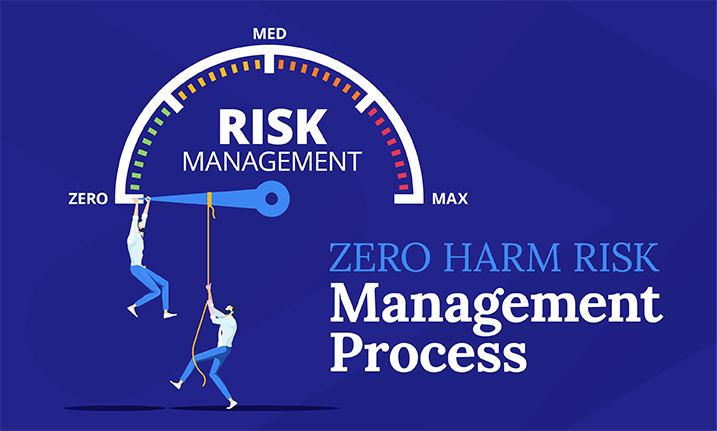

Situational awareness at work is a crucial part of health and safety. It should form part of your risk management framework. But how many of us really know what situational awareness is? Or how to learn and improve in this particular skill?
Understanding situational awareness
Situational awareness refers to being aware of what is happening around you, where you are in relation to other people or things, and what potential threats there might be. It forms part of any good risk management strategy.
Good risk management involves consistently assessing situations for any existing or future threats or risks based on the current situation/s.
The water might be calm now, but what factors might affect that in the future?
And what is possibly NOT being said – or shown? What could be interpreted in the wrong way?
Have you ever seen or heard the terms “failed to notice” or “was unaware of” in describing an accident or incident? News reports will say “the driver didn’t notice the tree branch….” For example. As humans, there is always the risk of error.
Technology can make us less aware as we get lazy or more aware as they help us navigate this complex skill.
For example, if we become removed from a task because it is automated, we become less actively involved. Likewise, routine or monotonous jobs that are carried out on ‘autopilot’ are often at risk of error.
But if technology can help us track data and analyse research to improve safety procedures, then this is a good thing! Other things to thank technology for are reminders, alarms, and health software. All these things can help our risk and safety systems to be better.
Situational Awareness as part of your risk management framework
Situational awareness is often split into three elements:
- Perception of the elements in the environment;
- Comprehension of the situation; and
- Projection of future status.
So, it’s not simply enough to understand what situational awareness is, you must also be able to communicate and act on situations to prevent risk.
All these elements should form part of your risk management strategy. And you can build on the health and safety culture on your organisation by ensuring people have adequate training in situational awareness.
When was the last time your risk management framework was reviewed? Does it include training for situational awareness?
5 ways to improve your situational awareness as a skill
If you’re feeling overwhelmed by all this, don’t worry because the good news is that situational awareness can be learned. And improved – constantly. It’s a skill that can literally save lives, maybe even your own. So, it’s worth reading on for some tips to help in this area.
We’ve mapped out just 5 simple ways to improve situational awareness for you and your team.
1. Assess risks from all angles
Learn to look at things with 360degree focus – not just your own! Also, look at what others might be seeing. How is that different from what you’re seeing?
Did they consider what happened before, during, after? What is the likelihood of A happening? B happening?
How likely is it that there have been other factors impacting the situation that you are not aware of?
And then question everything! “Not just “Why did they do that?” – also, ask “Maybe this made sense at the time, but not now?”
Questioning without judgement is a key factor in successful situational awareness.
2. Consider the subconscious
We have some cognitive biases. The implications of which need to be factored into our awareness of situations.
In order to effectively engage in situational awareness, make logical decisions, and look to the future with a strategic focus, the subconscious must be engaged and assessed.
Put simply, situational awareness should be open to a variety of perspectives and insights. This is how strengths and opportunities for improvement can be identified.
Don’t let unconscious bias affect your view and potentially lead to risk in your team.
3. Communicate with others
Being able to communicate the perception of risk is another vital part of the overall awareness strategy. Any effective strategy requires everyone to be ‘on board’ and the best way to achieve this is to communicate each stage of a risk assessment or potential hazard to all involved.

In practical terms, this might include simply Instructing workers in the safest way to do something, or telling someone (your supervisor, colleague etc) about hazards you see, or about any risks you perceive to be coming.
It can also mean just asking for help with a situation or task because your situational awareness training is telling you this could be risky as a one-person job.
For managers and leaders, it could mean putting in place proper systems and checks, and communicating to the team if/when situations change.
And don’t assume that just because you told someone about a risk or about correct procedure, that they actually heard you or that it was agreed. When communicating risk, it is much better to have a variety of ways to do this.
4. Make situational awareness part of your onboarding process and offer ongoing training
Getting it right early on is much easier than fixing issues later on.
Tell all newbies about your policies and strategies during your on-boarding process. And implement some situational training as part of the on-boarding process too, or as part of on-going training.
Training sessions should include realistic scenarios tailored to your industry.
By doing so, you can help foster a very healthy culture of health and safety management and allow all team members to feel comfortable assessing situations and reporting any risks. You can simply take a typical task in your business and add a small ‘what-if’ scenario to it.
Avoid massive or unrealistic ‘what-if’ scenarios that might lose the crowd as being “too ridiculous”. Allow each person to speak or share ideas, and don’t hesitate to talk through why various ideas might or might not work.
5. Practise situational awareness and lead from the top
The culture is often set from the top. If the management is practising effective situational awareness often, the team will follow.
It must be a conscious effort of all leaders to have a 360degree view of situations and show others this importance. It also helps for leaders to practice listening to what others say just as much as they talk.
Contact us at Rapid Global and chat through some ways to improve situational awareness in your organisation through clever systems.
We help businesses of all sizes, across all industries, to improve their work practices.







